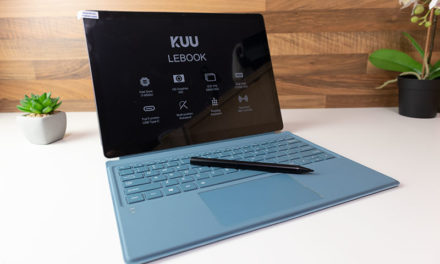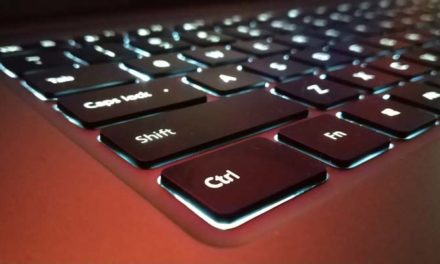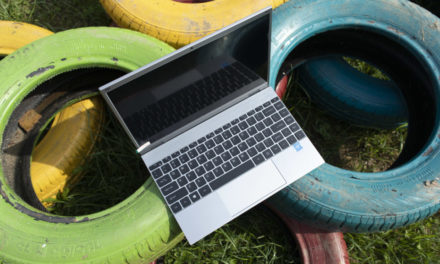
We tried: Toshiba Z830, a real gift
While you might think reading the introduction that you’ve strayed to a completely different side, that’s not the case, it’s still the HOC, we’re still testing and introducing all kinds of arvtech gadgets. Then why such an introduction? Somehow I wanted to show how I felt when I picked up the Toshiba machine. I used to shoot a very long time ago, I pressed a computer for the last time with such pleasure, and yes, I would probably be as happy for such a machine as the imaginary subject of the introduction.
Until the Toshiba Z830, portable machines have come a long way. From the chunky, bumford, loud and warming machines of the beginnings, many years of development have led to today’s thin, quiet and light notebooks.
The Z830, part of the Portégé family, belongs to the increasingly populous family of Ultrabooks. The common features of these machines are their slim design and long service life. The thickness of the Z830 varies between 8 and 16 millimeters, with the manufacturer promising more than eight hours of battery life. The machine was given a metallic-looking gray cover on both the inside and outside. According to the Toshiba side, the metallic effect is due to the fact that we actually tap a metal, a magnesium alloy.
The display is 13,3 inches in size and has a resolution of just 1366 × 768 pixels, yet it is perfectly usable in everyday life. If only because the matte, anti-reflective coating of the screen does its job well, the details remain visible even in sunlight, of course not in the same quality as if we were using it in the dark.
Ultrabooks don’t usually include an optical drive, for several reasons. On the one hand, the thickness of the machine would make installation difficult, and on the other hand, the use of disk readers has become almost completely unnecessary nowadays. With lightning-fast Internet, high-capacity memory cards, and a fast USB 3.0 interface, only a Blu-ray reader could kick a ball, at least in terms of capacity, but software is rarely released in this format. The resolution of the display does not reach full HD, so we will not watch high-definition movies on it either, at most if we use the HDMI output, but then the resolution of the Z830's display will not be important.
In addition to the lack of an optical drive, the machine can be said to be a full-fledged laptop, as it knows everything an average notebook can do, even a little more. In terms of connectors, we will have no sense of lack. There are a total of three USB ports, one of which is, in a practical way, the USB 3.0 standard on the side of the machine. You can connect quick storage here, so you don’t have to fold the display if you want to use a device.
There is also an Ethernet connector, an HDMI and a D-Sub output on the back of the machine, through which the image and, in the case of HDMI, the audio can be output from the machine.
I showed the Portégé Z830 to several of my acquaintances, and one by one they were looking for a lock that they could pull to open the display. Well, there is no lock here, not even the usual place to open it, the middle of the front panel, but the two sides of the display, where a small groove helps us to open it.
At first, it feels really weird when you fold up the thin display that it doesn’t bend a bit. This, of course, doesn’t detract from the value in use, we just aren’t used to the feeling. In contrast, the underside of the machine is absolutely stable, although it cannot be called thick. Since we do not want to disassemble the machine, we turn again to the manufacturer's side, where we find that we find a honeycomb-like arrangement inside the housing, thanks to said stability. In fact, this part cannot be bent.
I have already mentioned in the introduction that the keys go very gently, on a short path, are flat, their corners are rounded. Due to the small size of the machine, the size of the keys may not be the same as a desktop keyboard, but it can be used well nonetheless. Maybe a tiny concave would come in handy on top of the keys to make the keystroke more secure. It is important to mention that the buttons are also backlit, so they can be used well even in the dark.
The size of the touchpad is also appropriate, and the multi-finger sensing is no stranger to it either, so we can zoom in on images and texts with the usual finger movements on PDAs and tablets.
I have already mentioned in the introduction that after switching on, it takes an unusually short time for the operating system to fully set up. Of course, this is only unusual for those who don’t use SSD storage, but for sure, the 24,91 seconds I measured is really not much. Plus, it's not the time it takes to wake from sleep, but the time it takes from a completely off state to a fully loaded state of Windows 7. Anyone who doesn’t even have enough can also use the Toshiba Hi-Speed Start setting, which in my own measurement has carved out another 4 seconds of start-up time.
Speaking of Hi-Speed Start, it’s important to mention that Toshiba has quite a few utilities to please customers. They help you with everything from fine-tuning your machine to making the most of your multimedia capabilities to restoring your system. For anyone who wouldn’t even have enough of the good, I can recommend Toshiba’s own music store, where we can legally access our favorite sounds for pennies.
After the many words, let the numbers follow, we measured!





















